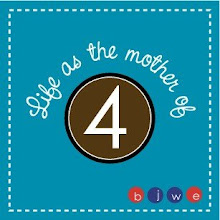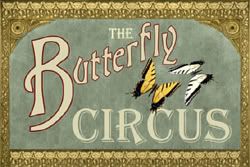Thomas Armstrong in his essay Special Education and the Concept of Neurodiversity states that the “basic premise [of neurodiversity] is that atypical neurological wiring is part of the normal spectrum of human differences and is to be tolerated and respected like any other human difference such as race, gender, sexual preference, or cultural background.”
He goes on to say, “Consider the issue of inclusion in education. Regular classroom teachers are far more likely to want a "rare and beautiful flower" or "an interesting and strange orchid" included in their classroom than a "broken" or "damaged" child. The use of ecological metaphors suggests an approach to teaching as well. Individual species of flowers have specific environmental needs regarding sun, water, soil conditions, and so forth. Similarly, neurodiverse children will be seen as having their own differing ecological thriving factors, and it will be a key role for a neurodiversity specialist to understand each child's unique needs for optimal growth. The goal will not be to try and "cure" "fix" "repair" "remediate" or even "ameliorate" a child's "disability." In this old model, such kids are made either to approximate the norm (especially for national accountability tests), or helped to cope with their disabilities as best they can (the phrase "she can learn to have a successful and productive life despite her disability" comes to mind here).”
The term Neurodiversity was coined by Judy Singer in 1998 and some proponents hold the “view that autism is a unique way of being, rather than a disease to be cured. Such parents say they value their children's individuality and want to allow their children to develop naturally. According to proponents, autistics may need therapies only to cure [co-morbid conditions], or to develop useful skills. Forcing autistics to act as desired, or trying get rid of autistic neurological wiring is condemned. The proponents think that if autistics face more difficulties in life, the source[s] are the society's institutions and habits, not autism itself.”
Further they believe that society is prejudiced against people with neurological differences. This is apparent in: “attempts to cure, medicate, institutionalize or force behavioral changes in autistics either against their will or without knowing their will.” They are concerned with references to “damage or abnormalities,” intolerance, discrimination, lack of accommodation, belief an individual with autism is inferior, that autism should be cured, institutionalized barriers, or barriers caused by social awkwardness.
http://www.lumrix.net/medical/autism/neurodiversity.html
The Neurodiversity movement is generally made up of people with Asperger’s and parents of children with autism although the movement has spread to people with other disabilities.
Common Ground:
Anyone who has a child or sibling with any kind of special need whether it is severe or mild wants that child to succeed to the best of their ability, be embraced by society, to be happy, safe and to live a fulfilling life. Parents of these children work to improve the quality of life of their children.
Does, as Thomas Armstrong asserts, calling a child a "rare and beautiful flower" rather than "broken" or "damaged" translate into a better outcome or more respectful treatment of that child? I believe that labels matter and that individuals with disabilities should be valued for their accomplishments, should be autonomous to the extent they are capable and should be treated respectfully.
Is society not accepting and inclusive enough to individuals with disabilities? Is it prejudicial against those individuals? I think both sides agree that there are many ways society should and hopefully will improve. However, I reluctantly add that social skills are important to success in relationships and in all aspects of life. And regardless of how accepting society becomes, the reality is recognizing and responding to social cues facilitates and strengthens relationships.
Conflict over Cure
Whether autism is purely genetic or environmental triggered is one of the great conflicts within the autistic community and this conflict is central to the debate over neurodiversity.
The premise inherent within the neurodiversity movement is that that “atypical neurological wiring” for autistic people is and should be accepted as part of the normal human spectrum and that any attempt to cure them is disrespectful and prejudicial. It is also apparent that proponents of neurodiversity believe autism is genetic and not environmentally triggered. If one believes that something in the environment triggered the development of autism the premise that “atypical neurological wiring is part of the normal spectrum of human differences” doesn’t relate to that individual. Because if that individual was developing normally but an environmental insult damaged their neurological wiring and caused the development of a disability, that disability should not be regarded as part of the naturally occurring spectrum of human differences. Rather it should be classified the same way any disability caused by disease, toxin, accident or other environmental factor.
If one believes that autism was caused by an environmental insult any successful attempt to help that individual regain their initial developmental trajectory is cause to celebrate.
The Value of an Individual
Did the neurodiversity movement start as a reaction to society’s devaluation of individuals with disabilities? Perhaps. Proponents can come across as defensive and self-righteous. But their demands for tolerance and acceptance for individuals with disabilities is a worthy aim. My son has value because he exists, because he is a person and a child of God. He isn’t more or less inherently valuable because he has autism. His intrinsic worth would not increase if he was typical, though he would have a greater capacity to interact with society.
I’m confused about the hostility directed at parents who want to cure their child’s autism. We are sometimes accused of not accepting them for who they are and of loving them less because of our desire to cure them. Why is autism considered part of a child’s personality? Is autism the equivalent of being born deaf, blind or with some other disability? Perhaps there are similarities between how neurodiversity proponents regard trying to cure autism and how cochlear implants are regarded by the deaf community.
Perhaps it’s different for me because my children had recognizable personalities, abilities and cognitive changes when they regressed into autism. I knew them before they became autistic thus I can measure them against themselves. William, even with intensive therapy, has not recovered the attention span and sociability he had at 16 months. Is it fair to say that I do not accept him for who he is? Is who he is defined by autism? Or should he be defined by who he was and his potential at 16 months? Every parent defines their child however they want. But the self-congratulatory “I’m a better person than you because I accept my child and his disability” statements are self-serving.
Individuals with autism or Asperger’s are like square pegs trying to fit into the round holes in society. Is it kinder to try to metaphorically sand off their corners, or is it disrespectful? It matters more for the higher functioning individuals. This debate is pointless for William, if he says please and thank you without prompting I’ll be thrilled by his social skills! But for the rest – social skills matter even with very kind people.
People from both sides recognize that “normal” encompasses a wide range of social skills, intelligence, innate abilities as so on. We agree that society needs to do a better job of valuing and including people who fall within or outside the realms of what society deems normal. Ironically, people with “atypical neurological wiring” are likely to find the most acceptance from people like me and my children. Someone in our family has autism. We love him and believe that he has as much intrinsic value as any other human. While we recognize that he won’t contribute to society economically, he contributes in other ways by encouraging compassion, and acceptance.
Our family values individuals with disabilities. My middle school daughter and her friends visited peers in the sub-separate classroom during lunch. Parents of children with disabilities have told me that the teacher recommends my popular second grader as a potential friend and peer model. She willingly plays with a boy that she describes as “just like” her severely autistic brother. And we are not any different than other families in the same situation. Two of Jacob’s kindest friends have siblings with disabilities. And I had a friend, whose brother has Down syndrome, who during college volunteered to feed disabled children lunch at a local elementary school. I think the most powerful way we can help society become more accepting is through our example. I saw two developmentally disabled adults struggling to buy drinks from a vending machine. I, like any of you, went over to help. I bought them both a drink and sat back down. I didn’t realize they wanted more. Another woman then went over to help. I think she cared as much as I did but didn’t know what to do until she had an example. When we make our children and others with disabilities accessible and part of the community others start to see them as valuable individuals rather than retarded or an economic drain. I think our example is the most effective way to spread tolerance and acceptance of people with disabilities.
Note: I started writing this about a month ago when I became more interested in the neurodiversity movement. I read an interesting exchange at countering age of autism. Clearly, there are offshoots from the original movement and different interpretations of neurodiversity.
Update: July 2011 The Neurodiversity Movement is anti-cure.
Update: July 2011 The Neurodiversity Movement is anti-cure.






